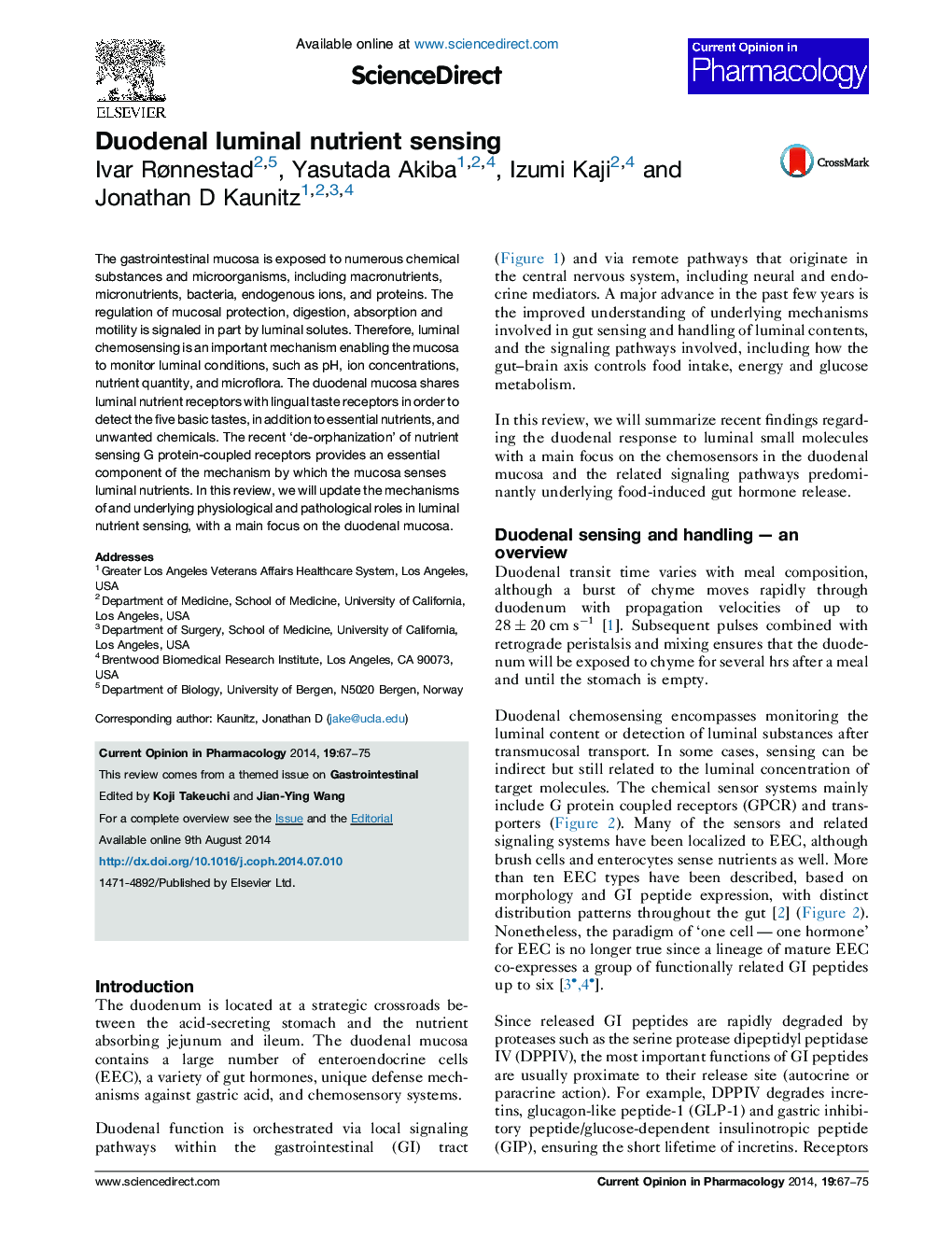| Article ID | Journal | Published Year | Pages | File Type |
|---|---|---|---|---|
| 2529911 | Current Opinion in Pharmacology | 2014 | 9 Pages |
•Luminal chemical substances are sensed by the duodenal mucosa by multiple mechanisms.•Nutrient sensing triggers gut hormone release to control local regulation of mucosal responses.•Aberrant nutrient sensing may be implicated in the metabolic syndrome.
The gastrointestinal mucosa is exposed to numerous chemical substances and microorganisms, including macronutrients, micronutrients, bacteria, endogenous ions, and proteins. The regulation of mucosal protection, digestion, absorption and motility is signaled in part by luminal solutes. Therefore, luminal chemosensing is an important mechanism enabling the mucosa to monitor luminal conditions, such as pH, ion concentrations, nutrient quantity, and microflora. The duodenal mucosa shares luminal nutrient receptors with lingual taste receptors in order to detect the five basic tastes, in addition to essential nutrients, and unwanted chemicals. The recent ‘de-orphanization’ of nutrient sensing G protein-coupled receptors provides an essential component of the mechanism by which the mucosa senses luminal nutrients. In this review, we will update the mechanisms of and underlying physiological and pathological roles in luminal nutrient sensing, with a main focus on the duodenal mucosa.
Graphical abstractFigure optionsDownload full-size imageDownload high-quality image (191 K)Download as PowerPoint slide
